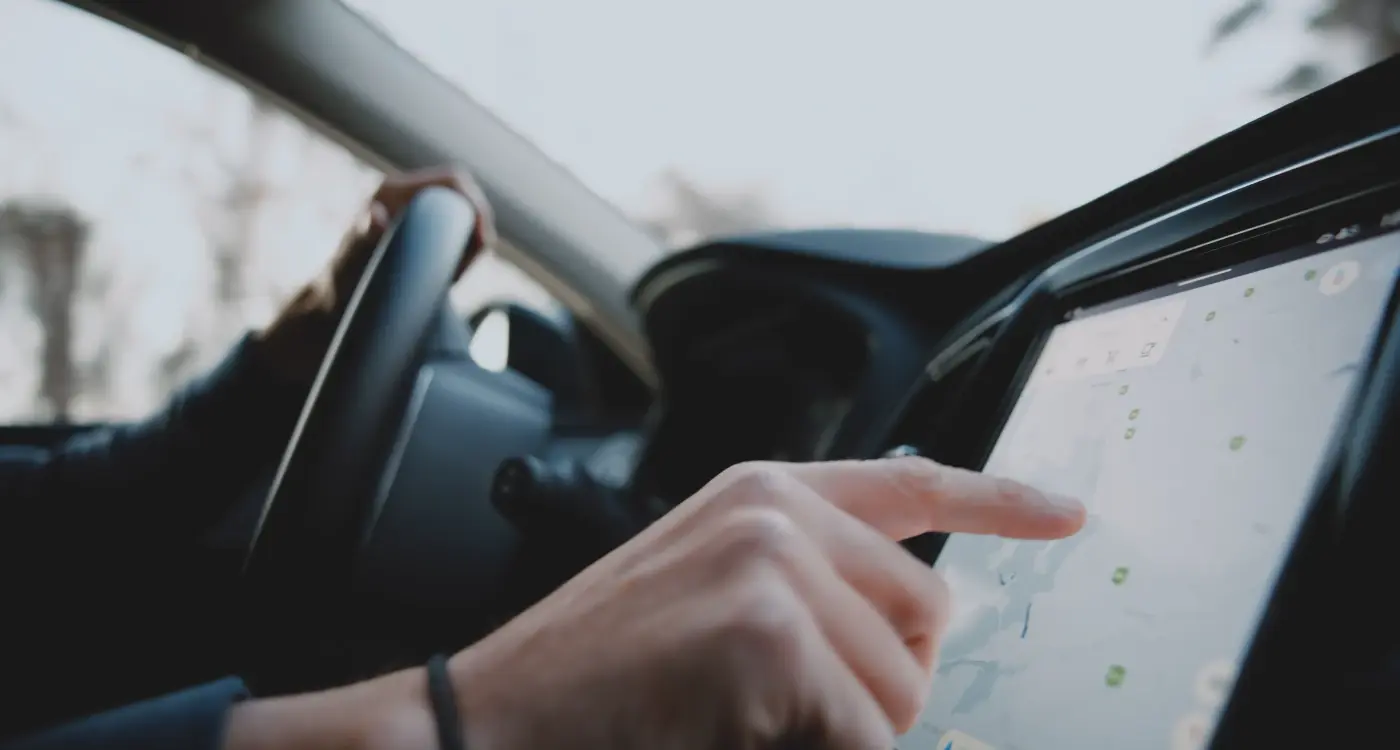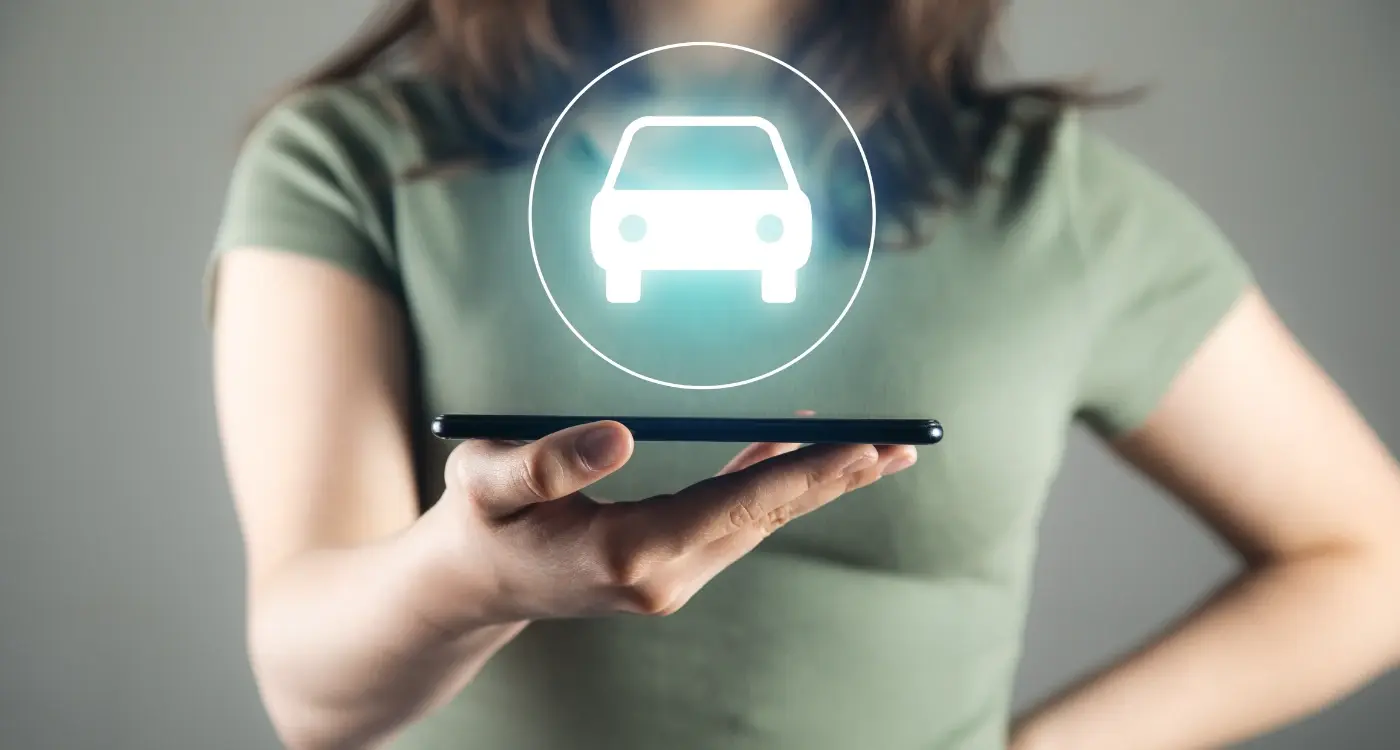What Are the Technical Challenges of Automotive App Development?
Here's a number that should make any car manufacturer break out in a cold sweat: 70% of app uninstalls happen due to poor performance or crashes. Now imagine that statistic applied to the apps running in your car—the ones controlling your navigation, entertainment, and safety systems. When car apps fail, it's not just frustrating; it can be downright dangerous.
Building car apps isn't like building regular mobile apps. I've spent years working on all sorts of mobile projects, from simple utility apps to complex enterprise solutions, but automotive development? That's a whole different beast. The technical obstacles you face when creating car apps are unlike anything you'll encounter in standard mobile development.
The moment you start developing for automotive, you realise you're not just building an app—you're building something that could literally be a matter of life and death
Think about it: your smartphone app might need to handle a few hundred users at once, but car apps need to process real-time data from dozens of sensors whilst maintaining split-second response times. They need to work flawlessly whether you're driving through the Scottish Highlands with patchy mobile coverage or stuck in London traffic on a sweltering summer day. The development difficulties don't stop there—you're dealing with hardware constraints that would make a web developer weep, safety regulations that make banking compliance look simple, and user interfaces that need to work when someone's hurtling down the M25 at 70mph. These aren't just technical challenges; they're the kind of problems that keep development teams busy for months.
Understanding the Connected Car Environment
Modern cars aren't just vehicles anymore—they're computers on wheels. I've worked on apps for everything from fitness trackers to smart home devices, but automotive projects are something else entirely. Cars today contain dozens of electronic control units (ECUs) that manage everything from engine performance to air conditioning. These systems need to talk to each other constantly, and now they need to communicate with your mobile app too.
The challenge starts with understanding that your app won't be the only thing running. Cars have their own operating systems, entertainment platforms, and safety systems that take priority over everything else. Your music streaming app might work perfectly on a phone, but put it in a car and suddenly it needs to pause when the navigation system gives directions, lower the volume during phone calls, and shut down completely if there's an emergency brake situation.
Multiple Communication Protocols
Cars use different languages to communicate, and I mean that quite literally. Here are the main protocols your app might encounter:
- CAN bus—the backbone network that connects most car systems
- Bluetooth for phone connectivity and audio streaming
- Wi-Fi for internet access and software updates
- 4G/5G cellular connections for real-time data
- USB and wireless charging protocols
Each manufacturer implements these differently. What works perfectly in a BMW might fail completely in a Toyota. The car's infotainment system acts as a gatekeeper, deciding what your app can and cannot access. Some systems are more open than others, but none of them will let you interfere with safety-critical functions—and rightly so.
The reality is that your app becomes part of a complex ecosystem where the car's systems always come first. This means building in flexibility from day one and accepting that your app will behave differently depending on which car it's running in.
Integration and Compatibility Challenges
Building car apps isn't like creating a simple shopping app for your phone. These applications need to work with dozens of different systems inside the vehicle—and that's where things get tricky. Each car manufacturer has their own way of doing things, which means developers face a proper headache when trying to make one app work across multiple brands.
The biggest challenge comes from the sheer variety of car systems out there. Ford uses one approach, BMW another, and Tesla does something completely different. Your app might work perfectly in a Mercedes but crash instantly in a Honda. It's like trying to create one key that opens every door in the world—technically possible but incredibly complex.
Operating System Complications
Car manufacturers use different operating systems and protocols. Some vehicles run Android Automotive, others use proprietary systems, and many still rely on older technology that wasn't designed for modern apps. This creates development difficulties that can turn a simple project into a nightmare.
Always test your car app on multiple vehicle brands early in development. What works on one system rarely works perfectly on another without adjustments.
Common Integration Problems
Here are the main technical obstacles developers face when building automotive applications:
- Different hardware specifications across vehicle models
- Varying screen sizes and resolution requirements
- Inconsistent data formats from vehicle sensors
- Limited processing power in older car systems
- Conflicting software update schedules between apps and vehicles
The reality is that automotive app development requires patience and extensive testing. Each integration brings new challenges, but understanding these compatibility issues upfront helps developers build more robust solutions that work reliably across different vehicle platforms.
Safety and Security Requirements
When you're building apps for cars, safety isn't just important—it's everything. Cars are moving at high speeds with people inside them, so any app that runs in a vehicle needs to meet incredibly strict safety standards. This creates a whole set of technical challenges that most mobile app developers never have to worry about.
The biggest safety challenge is making sure your app never distracts the driver. This means limiting what users can do whilst the car is moving; no typing long messages, no browsing through complex menus, and no watching videos. Many countries have laws about this, and car manufacturers have their own guidelines too. Your app needs to detect when the car is in motion and automatically switch to a simplified interface.
Security Threats Are Real
Cars are basically computers on wheels now, connected to the internet and talking to other systems. This makes them targets for hackers who might want to steal personal data or even take control of vehicle functions. Your app needs multiple layers of security—encrypted data transmission, secure authentication, and protection against malicious code injection.
The tricky part is that automotive security standards are much stricter than regular mobile app security. You're not just protecting someone's photos or messages; you're potentially protecting their life. This means extensive security testing, regular updates, and working closely with car manufacturers to ensure your app meets their security requirements.
Compliance Headaches
Different countries have different safety regulations for automotive apps. What works in the UK might not be allowed in Germany or Japan. You'll need to understand these regulations early in development because they affect your app's core functionality—not just surface-level features you can change later.
Real-Time Data Processing Problems
When you're developing car apps, one of the biggest headaches you'll face is handling data that needs to be processed instantly. Cars generate massive amounts of information every second—speed, engine temperature, GPS coordinates, fuel levels, tyre pressure. The list goes on and on. All this data needs to be collected, analysed, and acted upon without any delays.
The tricky part isn't just the volume of data; it's the fact that everything happens so quickly. Think about it—when a car is travelling at 70mph, even a one-second delay in processing collision warning data could mean the difference between a near miss and an accident. Your app needs to react faster than human reflexes, which puts enormous pressure on your development team.
Network Connectivity Issues
Here's where things get really complicated. Mobile networks aren't always reliable, especially when cars are moving through tunnels, remote areas, or switching between cell towers. Your app might lose connection for several seconds, but the car keeps generating data. You need to figure out how to handle offline functionality and store that information locally, then sync it back when connectivity returns—all without overwhelming the system or creating conflicts.
The challenge isn't just processing data quickly; it's maintaining accuracy and reliability when dealing with intermittent connections and varying network speeds
Battery and Processing Limitations
Real-time processing is incredibly demanding on both the device's processor and battery. Car apps often run continuously in the background, which means your code needs to be incredibly efficient. Poor optimisation leads to overheating phones and drained batteries—something that becomes a serious safety concern when drivers rely on their devices for navigation or emergency features.
User Interface Design Constraints
Designing apps for cars brings a whole set of UI challenges that you simply don't face with regular mobile apps. The biggest constraint? Drivers can only glance at screens for a few seconds at a time—and that's assuming they should be looking at all. This creates a massive problem for traditional app design patterns that rely on users reading text or navigating complex menus.
Screen sizes in vehicles vary wildly, from tiny dashboard displays to large infotainment systems. Your app needs to work across all of them, which means designing flexible layouts that can scale up and down without losing functionality. Touch targets need to be much larger than you'd expect too; when someone's driving, their finger precision drops significantly.
Accessibility Under Pressure
Voice control becomes absolutely critical in automotive apps. Users need to accomplish most tasks without taking their hands off the steering wheel or their eyes off the road. This means your app's voice interface isn't just a nice-to-have feature—it's the primary interaction method.
The visual hierarchy has to be completely rethought. Information needs to be digestible in milliseconds, not minutes. Large fonts, high contrast colours, and minimal text become non-negotiable requirements. Complex workflows that might work fine on a phone become dangerous distractions in a car.
Environmental Factors
Lighting conditions change constantly while driving—from bright sunlight to dark tunnels. Your interface needs to remain readable in all conditions, which limits colour choices and requires careful consideration of contrast ratios. Glare from windscreens and reflections can make even well-designed interfaces unusable.
The result? Automotive UI design requires stripping away everything non-critical and presenting only what users absolutely need to see. It's minimalism driven by safety, not aesthetics.
Testing and Quality Assurance Complexities
Testing car apps isn't like testing regular mobile apps—there's so much more that can go wrong! When you're dealing with development difficulties in the automotive space, you quickly realise that your app needs to work perfectly in conditions that most developers never think about. We're talking about extreme temperatures, vibrations from the engine, and interference from other car systems.
The biggest challenge? You can't just test everything on your laptop. Car apps need to work with actual vehicle hardware, and that means testing across dozens of different car models, each with their own quirks. Some cars have older infotainment systems that struggle with newer apps, whilst others have cutting-edge displays that reveal bugs you never knew existed.
Always test your car app in a real vehicle environment—simulators miss the electromagnetic interference and physical conditions that can cause unexpected crashes.
Real-World Testing Scenarios
These technical obstacles make quality assurance incredibly complex. Your app might work perfectly when the car is parked, but what happens when the engine starts and creates electrical interference? Or when the GPS signal drops in a tunnel? Testing teams need to simulate these scenarios repeatedly.
- Temperature extremes from -20°C to 60°C
- Poor network connectivity whilst driving
- Integration with multiple car systems simultaneously
- Battery drain impact on vehicle performance
- Voice command accuracy with road noise
Multi-Platform Complications
Then there's the platform nightmare. Your car app might need to work on Android Auto, Apple CarPlay, and the car manufacturer's own system. Each platform has different limitations and requirements—what works on one might completely fail on another. Testing all these combinations takes weeks longer than standard mobile app testing, but skipping any combination risks frustrated users and poor reviews.
Performance and Resource Management Issues
Building automotive apps brings unique performance challenges that don't exist in regular mobile development. Cars have limited processing power and memory compared to modern smartphones—yet they need to handle multiple demanding tasks simultaneously. Navigation, music streaming, phone calls, and vehicle diagnostics all compete for the same resources.
The biggest headache is battery management. Unlike your phone that you charge every night, car systems need to run efficiently without draining the vehicle's battery when the engine is off. This means every function needs careful optimisation; background processes must be minimal, and apps should enter sleep modes when not actively used.
Memory and Processing Constraints
Most automotive systems run on older hardware that prioritises reliability over raw performance. Your app might work perfectly on a development machine but struggle when competing with the car's core systems. Real-time processing of GPS data whilst handling audio streaming can quickly overwhelm these systems—leading to crashes or frozen interfaces.
Network and Data Management
Mobile connectivity in vehicles is patchy and expensive. Apps must handle frequent disconnections gracefully and minimise data usage. Caching strategies become critical; you cannot rely on constant internet access like desktop applications. Smart data compression and selective syncing help manage both bandwidth limitations and user costs.
Temperature extremes add another layer of complexity. Electronics behave differently in freezing winter mornings or scorching summer heat. Processing speeds fluctuate, batteries drain faster, and components may throttle performance to prevent overheating. Your app needs to adapt to these conditions automatically—scaling back features when resources become scarce whilst maintaining core functionality that drivers depend on.
Conclusion
After walking through all these technical obstacles, it's clear that building car apps isn't like creating your typical mobile application. The development difficulties we've covered—from real-time data processing to safety requirements—make automotive software development one of the most challenging areas in tech right now.
What strikes me most about working on car apps is how every decision carries weight. You can't just push out updates and fix things later like you might with a social media app. When you're dealing with vehicle systems, there's no room for "we'll patch that next week" thinking. The integration challenges alone can keep development teams busy for months, and that's before you even start thinking about the security implications.
The connected car environment brings its own set of headaches too. You're not just building for one platform or one screen size—you're creating software that needs to work seamlessly with dozens of different vehicle systems, each with their own quirks and limitations. The testing requirements are frankly enormous, and the performance standards are stricter than almost any other type of application.
But here's the thing: despite all these technical obstacles, the automotive industry is moving forward rapidly. Car manufacturers know that consumers expect their vehicles to be as smart and connected as their smartphones. The challenges are real and they're complex, but they're not insurmountable. It just takes the right expertise, proper planning, and a deep understanding of what makes automotive development different from everything else out there.
Share this
Subscribe To Our Learning Centre
You May Also Like
These Related Guides

What IoT Integrations Work Best For Automotive Mobile App Development?

How Do You Handle Offline Functionality in Car Apps?



